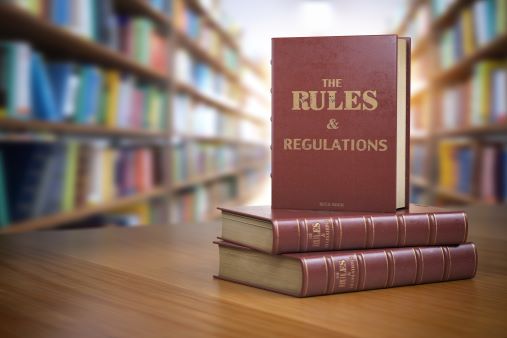Barnes & Thornburg Commercial Litigation Update, March 2018
Amendments to Federal Rule of Civil Procedure 37(e) went into effect in December 2015 to address a party’s breach of the duty to preserve electronically stored information (ESI). Rule 37(e) allows a party to seek sanctions in the event another party failed to take reasonable steps to preserve relevant information in anticipation of litigation. It allows a court to “order measures no greater than necessary to cure the prejudice,” and, in the event a court finds a party acted with the intent to deprive, the court may dismiss the action, enter a default judgment, or instruct the jury that the information was unfavorable to the spoliating party.
Since going into effect, various district courts have analyzed and applied Rule 37(e) to determine the appropriate level of sanctions. Generally, district courts have ordered adverse inference instructions only when there was a clear showing of intent to deprive.
While the allowable sanctions under Rule 37(e) may throw a big blow to any party, the liability for spoliation of ESI does not end there. In addition to seeking sanctions under Rule 37(e), many states, including Illinois, acknowledge a common law claim of negligent spoliation. In Illinois, a claim for negligent spoliation requires, among other things, a showing that the spoliating party had a duty to preserve information and negligently breached that duty when it destroyed the information. Success on a negligent spoliation claim, as opposed to sanctions under Rule 37(e), requires a much lower burden since a claimant is not required to show intent to deprive. Thus, litigants may simultaneously use both a Rule 37(e) motion and a negligent spoliation claim against a party that destroyed electronically stored information. Recently, Barnes & Thornburg attorneys succeeded in their strategy to use both during their representation of the plaintiff in Williams v. Law et al., 14-cv-3248 (C.D. Ill.).
Mr. Williams was an inmate incarcerated at Western Illinois Correctional Center (WICC). He alleged that various correctional officers severely beat him and refused to provide him medical treatment during a routine shakedown at WICC in 2014. During the discovery phase of his lawsuit against the correctional officers for excessive force, Mr. Williams requested the video surveillance footage for the time and area in which the shakedown took place. In response, the correctional officers stated that while WICC had video surveillance cameras in that area, it destroyed the footage and could not recover it because the DVR machine had limited capacity and automatically recorded over itself every three to 10 days. The correctional officers’ and WICC’s failure to preserve the video surveillance footage deprived Mr. Williams of the exact evidence that would have allowed him to prove his claim for excessive force. Consequently, Mr. Williams amended his complaint to allege a claim for negligent spoliation and filed a motion for sanctions pursuant to Rule 37(e).
With respect to Mr. Williams’ Rule 37(e) motion, the U. S. District Court for the Central District of Illinois acknowledged that the destruction of the video surveillance footage prejudiced Mr. Williams. Since Mr. Williams also brought a negligent spoliation claim against the correctional officers, he was able to seek discovery on the issue of the destruction of the video footage. The information and evidence uncovered indicated, among other things, that the video footage was the best evidence to prove Mr. Williams claim. Thus, the court granted Mr. Williams the right to present a modified jury instruction that would allow the jury to make its own conclusions regarding the intent to deprive and allowed Mr. Williams to present evidence regarding the destruction of the video footage.
The court also denied the correctional officers’ motion for summary judgment and allowed Mr. Williams’ negligent spoliation claim to proceed to trial. The court rejected the correctional officers’ argument that they did not have the duty to preserve the video footage because litigation with Mr. Williams was not reasonably foreseeable. Mr. Williams had filed a grievance following the beating, which would have been reviewed by various individuals at WICC throughout the grievance process. This was sufficient to put WICC and the correctional officers on notice that litigation was reasonably foreseeable and triggered the duty to preserve the video footage. Over the objection of the correctional officers, the court issued the following jury instruction:
- There are two ways that Defendants could owe a duty to preserve the video surveillance evidence. The first way is if Defendants had a policy or procedure of preserving evidence in these types of circumstances. If Defendants’ policies and procedures were such that it regularly preserved video surveillance evidence in circumstances such as this, then they affirmatively assumed a duty.
- The second way that Defendants could owe a duty to preserve the video surveillance evidence is under the “special circumstances theory.” Special circumstances create a duty when a plaintiff gives actual or constructive notice of potential litigation.
At trial, Mr. Williams showed that pursuant to WICC’s policies and procedures, his grievance should have triggered preservation of the video footage. Pursuant to its ruling on Mr. Williams’ Rule 37(e) motion, the court allowed Mr. Williams to explain the precise manner in which WICC and the correctional officers were on notice that litigation was foreseeable and that the video footage was highly relevant to his claims.
Ultimately, the jury found in favor of Mr. Williams on the negligent spoliation claim against all correctional officers – a result that was made possible, in part, by the court’s ruling on Mr. Williams Rule 37(e) motion. The jury awarded compensatory and punitive damages in favor of Mr. Williams and against all defendants.
The ability of a litigant to assert both a violation of Rule 37(e) and common law negligent spoliation creates a scenario in which the party seeking relief may use one tool to prove violation of the other. As was the case in Williams v. Law et al., the relief granted under a Rule 37(e) motion may be used to help prove the party engaged in negligent spoliation. Conversely, a claim for negligent spoliation allows a party to conduct discovery on the events and issues that constituted the spoliation, which, in turn, may be used to support a motion for sanctions pursuant to Rule 37(e). The interplay between Rule 37(e) and common law claims of negligent spoliation shed light on the increasing importance to preserve electronic information that may be relevant to potential litigation.
Copies of the jury instructions and verdict forms can be obtained by contacting Denise or Laura.
Denise Lazar is a partner in the Firm’s Chicago office and is a member of the Firm’s Litigation Department and Commercial Litigation Practice Group. Denise is also the Co-Chair of the Firm’s Toxic Tort Practice Group and Co-Chair of the Firm’s Women’s Initiative and a member of the Firm’s Diversity Committee. Denise is a seasoned trial lawyer who represents companies and individuals in civil matters litigated throughout the country.
Denise can be reached via telephone at (312) 214-4816 or by e-mail at dlazar@btlaw.com.
Laura Luisi is an associate in the Firm’s Chicago office and is a member of the Firm’s Litigation Department and Labor & Employment Department. Ms. Luisi assists clients in a variety of commercial litigation matters, including contract disputes, unfair competition claims, and construction litigation. She also assists clients with internal and government investigations in the white collar and labor and employment contexts.
Laura can be reached via telephone at (312) 214-4582 or by e-mail at lluisi@btlaw.com.
© 2018 Barnes & Thornburg LLP. All Rights Reserved. This page, and all information on it, is proprietary and the property of Barnes & Thornburg LLP. It may not be reproduced, in any form, without the express written consent of Barnes & Thornburg.
This Barnes & Thornburg LLP publication should not be construed as legal advice or legal opinion on any specific facts or circumstances. The contents are intended for general informational purposes only, and you are urged to consult your own lawyer on any specific legal questions you may have concerning your situation.














